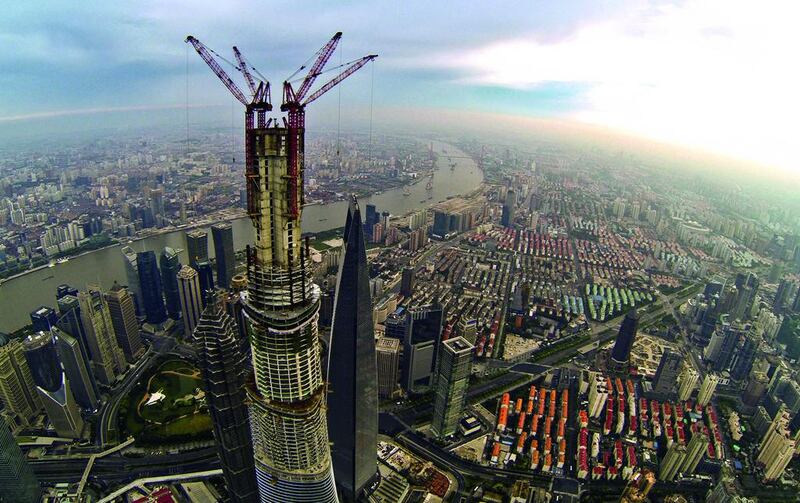Why Shanghai?
Look out across Shanghai and you’ll see there’s a new kid on the block. Rising like a spiralling minaret, the Shanghai Tower will become the tallest building in China – and second tallest in the world – upon completion next year. This is a city on the up. But that’s nothing new. For years, Shanghai, the face of modern China, has undergone the most radical of transformations.
But its well-documented juxtaposition of old and new, from its architecture to food, is just part of what makes Shanghai such a rewarding destination.
And now is an exciting, albeit chilly, time to visit as the 14 million residents prepare to celebrate Chinese New Year at the end of January. Fireworks, feasts and a festival-like atmosphere will sweep the city to mark the start of the Year of the Horse. But the occasion’s spiritual roots with also be felt with people flocking to temples to pray and ring bells to herald in a year of new beginnings.
A comfortable bed
Sleep in style at the urban The PuLi Hotel and Spa (www.thepuli.com; 0086 21 3202 9999), among the best of Shanghai's five-star properties. Beyond the 32-metre long bar, the lobby is filled with old Chinese stone carvings and striking prints by the native artist Li Jang Ving. The 229 rooms have iPod docks linked to Bose sound systems, walk-in rainforest showers and oversized baths that overlook the city. Doubles from 1,573 yuan (Dh950), excluding breakfast.
It's also possible to bed down in luxury without spending a fortune. Quintet (www.quintet-shanghai.com; 0086 21 6249 9088) is tricky to find – there's no sign on the heavy wooden door – but this small 1930s guesthouse in the French Concession is full of character and charm. Of the six individually decorated rooms, the largest is the Oriental Pearl and comes with antique furniture and a Chinese chaise longue. Doubles from 850 yuan (Dh513), including breakfast.
Find your feet
Flowing through the city is the cloudy Huangpu River. It divides Shanghai’s two radically different districts: the historic Puxi, on the right bank, and the futuristic Pudong that, 20 years ago, was nothing more than countryside.
The Bund gives a good overview of both. This elegant riverfront promenade is lined with Art Deco buildings from the 1920s when western powers staked a claim in China. Among the granite towers is Customs House, topped with a clock tower inspired by Big Ben.
Staring at Pudong, dominated by the Oriental Pearl Tower, it’s wrong, but easy, to assume that Shanghai has sacrificed its heritage for modernity. Hidden among the shiny high-rises are peaceful gardens from the Ming Dynasty and ancient temples where the air is thick with burning incense.
Meet the locals
Rise early and head to the Bund, where locals gather every morning at around 6am to practise tai chi. Visitors are welcome to watch or even take part. Another popular spot is People’s Park, where parents gather to find suitors for their unlucky-in-love, grown-up children by placing ads in the “marriage market” held every weekend.
Locals also outnumber tourists at the crowded fresh-produce market along Xian Zuo Road. Fight your way through the throngs browsing the goods on offer: buckets of eels, live chickens and fruit and veg spread out on the floor.
Book a table
Tucked away down a side street off Nanjing Road is Mei Long Zhen (0086 21 6253 5353), a restaurant that has been rustling up traditional Shanghainese dishes since 1938. The dining room of mahogany and marble shouts old-school splendour, but the food, such as the deep-fried eel and spicy tofu soup, is no-frills.
For more decadent dining, book a table at Dragon Phoenix at the iconic Peace Hotel (www.fairmont.com; 0086 21 6321 6888). Not only is Chef Xu's food top notch – try the wok-fried river shrimps with chilli for 188 yuan (Dh114) – but the views over Pudong aren't bad either. Afterward, pop downstairs for a nightcap in the cosy jazz bar and watch its famous band play. The six grey-haired musicians have an average age of 77.
Elsewhere, step back in time at the Old Shanghai Teahouse (0086 21 5382 1202), near the historic Yuyuan Garden. Filled with eclectic trinkets and photos of the city from the 1930s, it’s a charming place to people-watch while sipping a cup of fragrant Pi Lo Chun green tea for 65 yuan (Dh39).
Shopper’s paradise
There are markets specialising in anything from pearls to fabric, but the best is Fuyou (457 Fangbang Road), a trove of old Oriental pottery, jade sculptures and rare coins from the Qing Dynasty.
For more modern-day treasures, venture across town to M50 (www.m50.com.cn), a trendy art complex with dozens of galleries and studios in converted redbrick mills. Several sell exquisite ceramics handmade by local artisans.
Fashionistas, meanwhile, will gravitate towards the French Concession. Xinle and Chang Le are two of the most popular roads with independent local designers showing off their wares.
What to avoid
Forget standing in line and shelling out 150 yuan (Dh91) to visit the 100th floor observatory deck of the Shanghai World Financial Centre (www.swfc-observatory.com). Instead, enjoy the same views and bypass the queues in the Music Room bar in the Park Hyatt (www.shanghai.park.hyatt.com; 0086 21 6888 1234) – on the 92nd floor of the same building.
Don’t miss
A visit to the local bank. Built in 1923, the HSBC Building on the Bund was once the second largest building in the world. The domed ceiling of its cavernous lobby is covered in mosaics depicting mythological creatures and global banking cities; ornate creations that were ordered to be destroyed during the Cultural Revolution. Thankfully they weren’t. Covered with white plaster, they were rediscovered in the 1990s.
Go there
Etihad (www.etihad.com) flies direct from Abu Dhabi to Shanghai. Return flights cost from Dh3,600, including taxes. Journey time is around nine hours.
[ weekend@thenational.ae ]
Follow us @TravelNational
Follow us on Facebook for discussions, entertainment, reviews, wellness and news.





